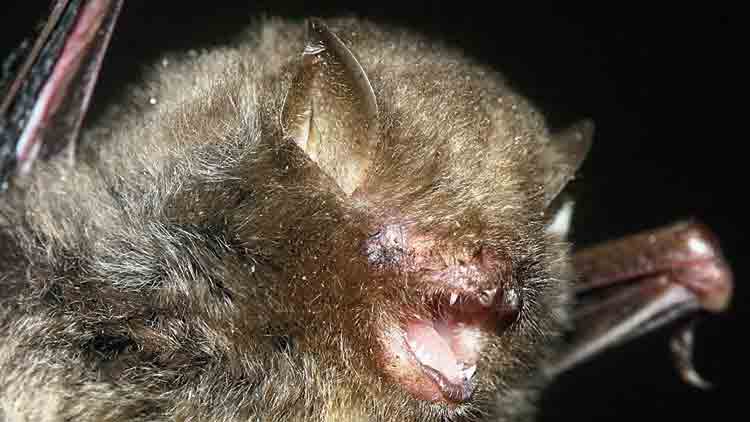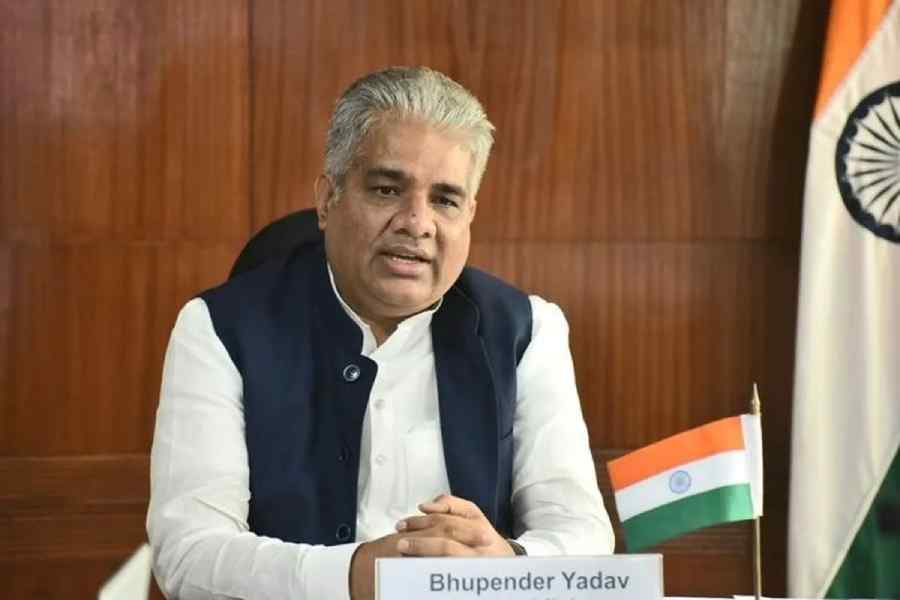A type of coronavirus, NeoCov, that spreads among bats in South Africa may pose a threat to humans in future if it mutates further, according to a study by Chinese researchers, ndtv.com quotes news agency PTI.
The yet-to-be peer-reviewed study recently posted on the preprint repository BioRxiv, shows that NeoCov is closely related to the Middle East respiratory syndrome (MERS), a viral disease first identified in Saudi Arabia in 2012. Coronaviruses are a large family of viruses that can cause diseases ranging from the common cold to Severe Acute Respiratory Syndrome (SARS), it adds.
Researchers from Chinese Academy of Sciences and Wuhan University noted that NeoCov is found in a population of bats in South Africa and to date spreads exclusively among these animals. In its current form, NeoCov does not infect humans but further mutations may make it potentially harmful, the researchers noted.
"In this study, we unexpectedly found that NeoCoV and its close relative, PDF-2180-CoV, can efficiently use some types of bat Angiotensin-converting enzyme 2 (ACE2) and, less favourably, human ACE2 for entry," the authors of the study noted. ACE2 is a receptor protein on cells that provides the entry point for the coronavirus to hook into and infect a wide range of cells.
"Our study demonstrates the first case of ACE2 usage in MERS-related viruses, shedding light on a potential bio-safety threat of the human emergence of an ACE2 using "MERS-CoV-2" with both high fatality and transmission rate," they said. The researchers further noted that infection with NeoCov could not be cross-neutralised by antibodies targeting SARS-CoV-2 or MERS-CoV.
"Considering the extensive mutations in the RBD regions of the SARS-CoV-2 variants, especially the heavily mutated Omicron variant, these viruses may hold a latent potential to infect humans through further adaptation," the authors of the study added.
The World Health Organisation reacting to the NeoCov coronavirus requires further study, adds ndtv.com. WHO said that it is aware of the development, but the virus requires further study to ascertain if it poses a risk to humans. "Whether the virus detected in the study will pose a risk for humans will require further study," the health body was quoted as saying by Russian news agency TASS.
The organisation said that the source of 75% of infectious diseases in humans was wild animals. "Coronaviruses are often found in animals, including in bats which have been identified as a natural reservoir of many of these viruses," the global body said. It said it is working actively to tackle such emerging zoonotic viruses.
WHO also thanked the Chinese researchers for sharing their research in preprint.
10 billion jabs worldwide

Representation picture of people getting jabbed File Picture
The world surpasses 10 billion vaccine doses administered, but gaps persist in who gets the shots. When Prime Minister Benjamin Netanyahu of Israel rolled up his sleeve in December 2020 to receive a dose of the Pfizer-BioNTech coronavirus vaccine, kicking off one of the world’s first mass rollouts of Covid shots, he declared that it marked “the beginning of the end” of the pandemic.
Thirteen months later, his prediction has proved far from true, but 10 billion vaccine doses have been administered globally, a milestone that reflects the astonishing speed with which governments and drug companies have mobilized, allowing many nations to envision a near future in which their people coexist with the virus but aren’t confined by it.
The milestone, reached on Friday, according to the Our World in Data project at the University of Oxford, has not been arrived at equitably, even though 10 billion doses could theoretically have meant at least one shot for all of the world’s 7.9 billion people.
In the wealthiest countries, 77 percent of people have received at least one dose, whereas in low-income countries the figure is less than 10 percent. As North America and Europe race to overcome Omicron surges by offering boosters, with some nations even contemplating a fourth shot, more than one-third of the world’s people, many of them in Africa and poor pockets of Asia, are still waiting for a first dose.
The United States has administered five times as many extra shots — about 85 million — than the total number of doses administered in all of Nigeria, Africa’s most populous nation. “Ten billion doses is a triumph of science but a complete failure of global solidarity,” said Madhukar Pai, a professor of epidemiology and biostatistics at McGill University in Montreal.
And not all vaccines are the same. Those made in China have shown to be less effective than the mRNA vaccines from Pfizer-BioNTech and Moderna. And while nearly all of the world’s Covid vaccines protect against severe illness, early research suggests that most offer little protection against infection from Omicron.
The consequences of the vaccine gap have been highlighted by Omicron, which was first identified in southern Africa. Low vaccination coverage creates conditions for widespread virus circulation and with that the possibility of new variants emerging.
The disparities remain even as Covax, the global vaccine sharing initiative that facilitates distribution of donations from rich nations, increases its deliveries. After a slow start because of hoarding by rich nations and large outbreaks that prompted export blockages, Covax said this month that it had delivered its billionth dose — though that is less than half of its initial target.
With inputs from New York Times News Service










